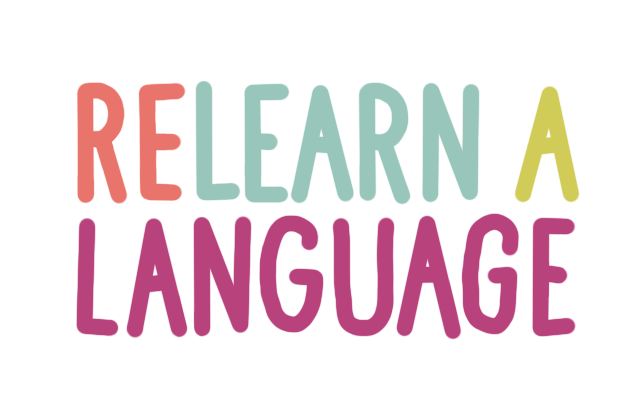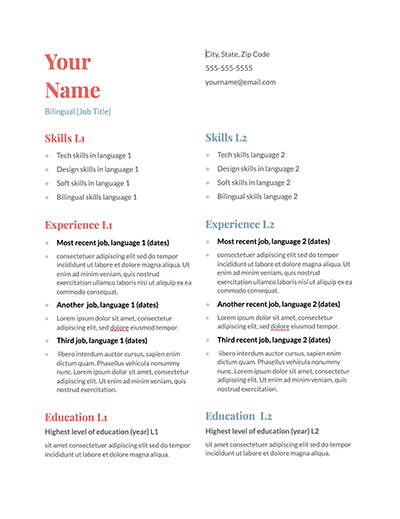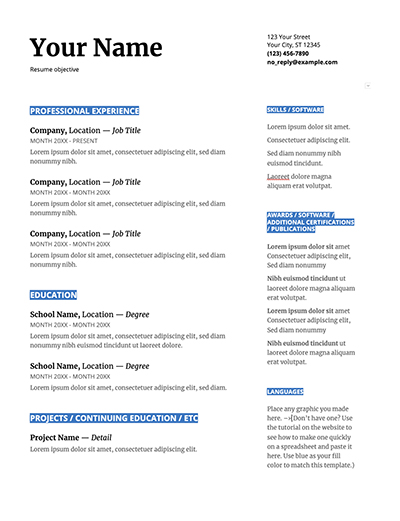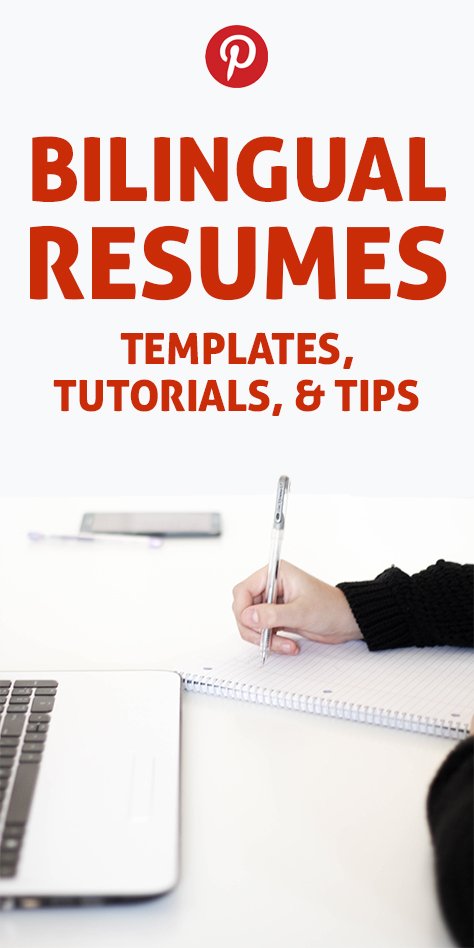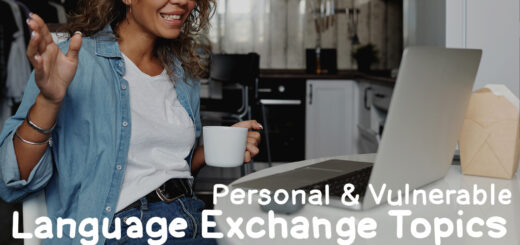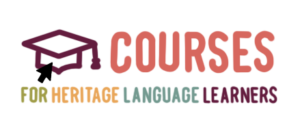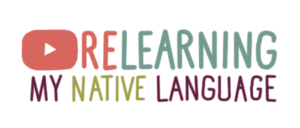Bilingual Resume (Examples, Tips, Templates)
by Marissa Blaszko · June 28, 2020
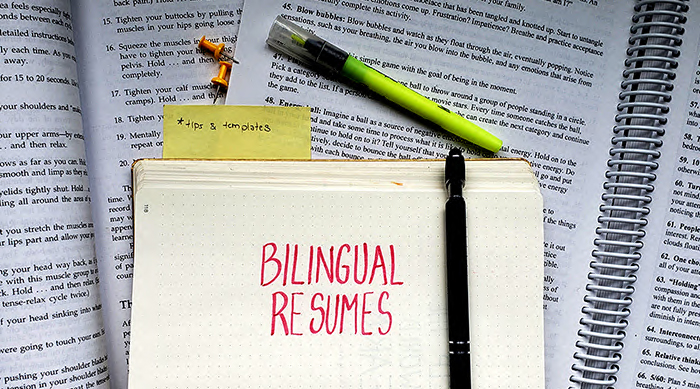
Building a bilingual resume can be incredibly rewarding–even if actually making your resume bilingual can feel overwhelming.
As a bilingual person who has done hiring for 3 different companies (including my own talent agency), I’ve found that (1) bilingual resumes catch my attention and (2) actually get me excited to interview the person.
By the end of this article, you will:
- know whether or not your resume should be bilingual;
- decide on what kind of bilingual resume you should have;
- know how to add language skills to your resume; and
- be able to construct your own bilingual with confidence.
BONUS: free templates at the end, plus a tutorial so you can edit them on Google Drive.
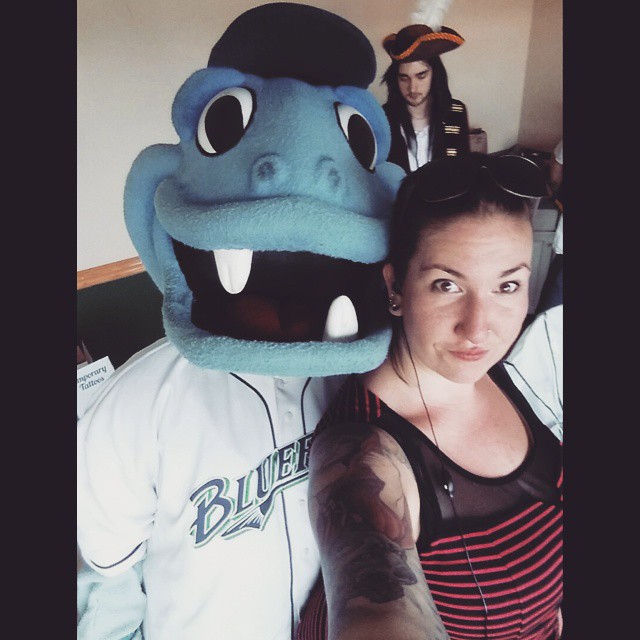
As a hiring manager, I know that bilingual job candidates are interesting to interview, culturally competent, and a linguistic asset to any organization.
But you might need some extra help.
Because in countries with long histories of discrimination against bilingual people (like the US and Canada), there are also reasons not to make your resume bilingual.
So how do you put languages on a resume?
How do make a totally bilingual resume?
Let’s take a look.
A Bilingual Resume VS A Resume for a Bilingual Person
Depending on the type of job you’re going for, there are two types of bilingual resumes you might want to make.
Let’s look at how you can make them, and what the strengths and benefits of each type are.
TYPE 1: a bilingual resume written in two languages
First, let’s look at why you might want to write your resume in two languages.
- You may not know which language you’re going to interview in, so showcasing two languages on your resume demonstrates that you’re happy to work in either. For example, in Canada many government posts require that you speak both national languages: English and French.
- If you’re interviewing for a company where a non-dominant language is spoken, you might want to stress that you can be interviewed in that language–but also work in the national language. For example, in the US you may want to apply for a job where Spanish is spoken in the workplace so you’re prepared to be interviewed in that language. But your English is also flawless, and want to make sure they know you can work with outsiders as well.
- The main skill you’re showing off is your linguistic ability. If you’re going for a job as a translator, language teacher, or interpreter, having a resume in two languages can be a great way to show your skills instead of just explaining them.
For cases like this, you have several options:
- A two-column resume with the same information listed twice on each side.
- Two different attachments of the same resume, one in each language.
- A two-page resume, the first in the dominant business language and the second in the other language.
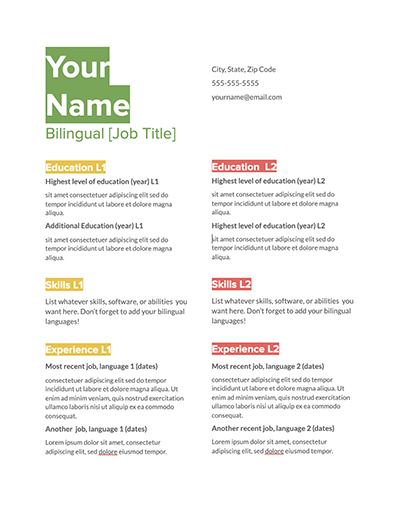
Here, you can see one template that I like for a short resume: the two-column one. But the other solutions work fine too.
The immediate win is that your bilingual resume will stand out from the monolingual resumes (even if the other candidates are also bilingual), and your skill with both of your languages will be evident immediately.
However, here are some reasons you shouldn’t have your bilingual resume in two languages.
- If your potential employer is not bilingual in those two languages, it might be alienating them.
- Resumes like this can look repetitive and like you’re “fluffing” them because you lack experience.
- If you have more experience that you want to add but not a lot of extra space on your resume, you might be wasting valuable page space.
If you don’t want to make a bilingual resume which is written in two languages, your next option is to write a resume that simply says you’re bilingual.
TYPE 2: A resume written in one language that demonstrates bilingual skills
Here’s why you would want to list your bilingualism to your resume when applying for jobs.
- If you’re working with the public in a country with large immigrant or indigenous populations, bilingualism can be essential across sectors. It may be a requirement for some posts.
- In office jobs like marketing or manufacturing, growing globalization means that bilingualism may come in handy even if it’s not essential to the job. This will help separate you from other candidates.
Now farther down in this article, we’ll get to why you might not want to list your bilingualism on a resume.
But for now, if you want a bilingual resume written in one language, here is how you can list your skill.
- Skills. This is the easiest way. You can list “bilingual in ____ and ____” under the nice big “additional skills” section of your resume. This is where you would add other skills such as typing word per minute, software abilities, or anything else brag-worthy. You can find some great skills examples here.
- Past job experience. If you had a job where you helped customers in two or more languages, simply add that under the responsibilities of that position.
- Education. If you became bilingual as an older child or adult, you can add where you learned the skill on your resume under Education (if it happened in high school or university) or under Continuing Education (if you learned it in another institution).
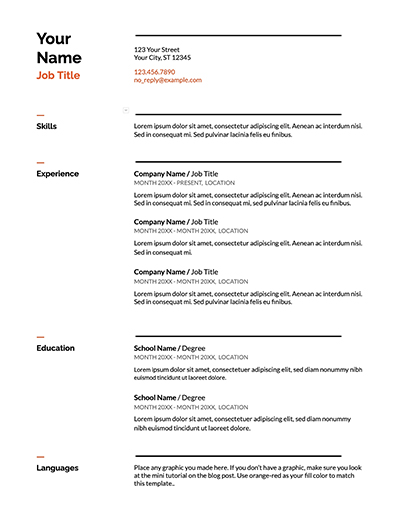
My advice is to go with the skills section of your resume if you have one.
And if you do put your bilingualism in that section, here are a few ways to make it sound good.
For these examples, we’ll pretend this job candidate is bilingual in English and Korean while living in the United States to give you some examples.
(Of course, fill in the blanks with whatever two languages you speak.)
- “Bilingual in English and Korean.” If you’re not sure how else you want to list your two languages, this is fine. But “bilingual” is a huge group of people, and it leaves a lot of speculation to the employer. So for me personally, this is the least impactful way to list your bilingualism.
- “Balanced Bilingual in English and Korean.” If you have two languages at the same skill level, “balanced bilingual” helps clarify that a little–although very few people are truly balanced. So let’s keep reading.
- “Native English Speaker with Advanced Korean Skills.” This is great for people who learned their bilingual language as an adult, or children who grew up in an English speaking environment so speak a slightly-weaker (but still good) heritage language.
- “Native Korean Speaker with Advanced English Skills.” We’ll get into racism soon, but unfortunately, the reality is that many monolingual employers might make unfair judgments on immigrant candidates. If you are a native speaker of a non-dominant language but also skilled in English, you may not want to word your resume like this to avoid discrimination. I would recommend the “balanced bilingual” approach as listed above.
- “English Speaker with Korean Customer Service Skills.” If you speak enough of the language to help someone in need, but not enough to do business, this might be for you.
- “Advanced Listening/Speaking Skills in Korean.” If you grew up using your bilingual language at home, but can’t read or write in it, that’s ok. Just let the employer know that. For this type of bilingual, I also don’t think you need to include that you speak English in this section because that will be clear in the context of your English resume.
So now that we’ve gone over why you might want a bilingual resume, I also want to talk about why you might not want a bilingual resume.
The next part of this article was difficult to write, but I’ve seen many coworkers make subconscious decisions about a candidate based on which languages they spoke. So it’s important for me to address that now.
Why you might not want a bilingual resume
In certain parts of the world, especially in English-speaking countries, bilingual applicants may face discrimination. This is especially true if they’re immigrants or have a name that’s hard to pronounce in the dominant language.
I have seen plenty of it first-hand in various jobs, even by people who claim they’re “not racist”.
Even non-immigrant bilinguals face a different challenge: discrimination within their own community.
While illegal, these types of discrimination are very hard to prove, and some bilinguals may not think it’s worth the risk.
Being bilingual at any level is something to be proud of. We’re bicultural, we’re fast thinkers, and honestly: we’re just cool.
But when you’re not sure who’s interviewing you, there are other factors to take into consideration.
Should you list your heritage language on a resume?
Many bilinguals (like me) have one language that is CLEARLY stronger than the other.
We went to school in English, made friends in English, and watched TV in English… so our “home language” (aka our heritage language) is a lot weaker.
So should you put this weaker heritage language on your bilingual resume?
I can’t answer this for you, but my feeling is that it depends on your level and the position required.
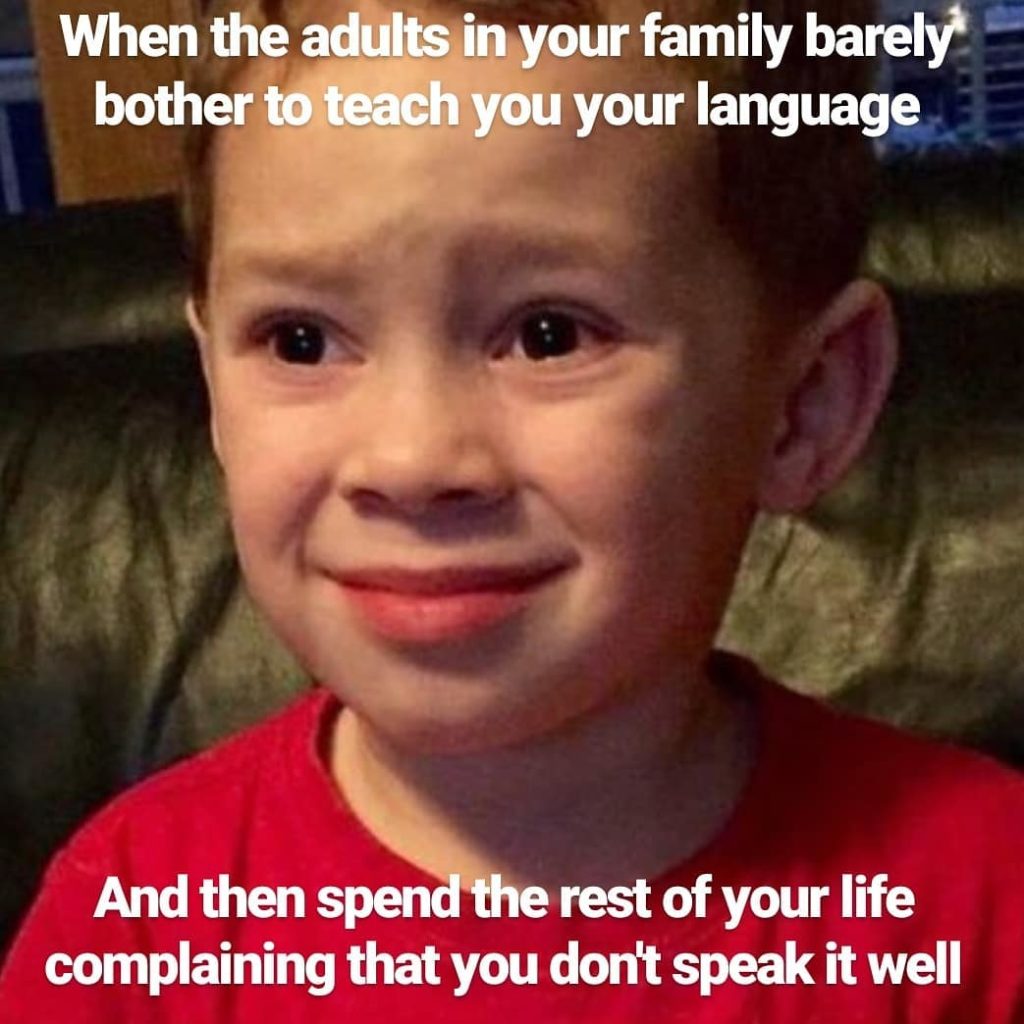
Personally, I work in marketing. I couldn’t work in my field with my Polish, so even though I consider it my native language I don’t list it on my resume. It’s just not an asset in my job, even though my city has a huge Polish community.
I could work in French, however, because as an adult I’ve studied professional vocabulary and grammar in that language. So because that could be an asset, I might list that on a resume even if I don’t think a local job will need French speakers as much as they need Polish speakers.
But here’s the catch.
When I was a teenager working in the mall? I totally listed Polish! We have a big Polish community here, and to help them I just had to be polite and explain basic things. In that context, I could totally use my language. Plus, we have no French population here–so it wouldn’t have been important for me to add my French.
That’s why you really have to think about this question for yourself.
My suggestion is to ignore your feelings of guilt or inadequacy (which are normal for all heritage speakers). Just ask yourself how practical your skills would be in the required position.
Should immigrants list that they're bilingual on a resume?
Immigrants have so much to be proud of, including their rich linguistic heritage. Teaching our children how to speak their family’s language is one of the biggest gifts we can give them.
But should we make bilingual resumes?
Here are a few questions you can ask yourself in order to decide:
- Will my language be helpful for the job I’m applying for?
- Is this industry accepting of immigrants?
- Does the dominant culture hold my language highly (such as with French, German, or Italian)? Or do they often disrespect my language (such as with Spanish, Polish, or Haitian Creole)?
- Is it important to me that I only work in places that respect my culture?
- Will the hiring manager doubt my abilities in English if I list a different language as my native language?
In general, bilingual resumes stand out from other monolingual resumes and are a great asset to any business.
However, some managers may let racism or chauvinism blind them to that.
(But do you really want to be working at a place like that anyway?)
For multilingual resumes, keep reading.
Multilingual Resumes
Have more than two languages to add to your resume?
Knowing how to add them in an organized and intelligent way is key.
But the problem is that each country has a different system of measurement for language proficiency. In Europe, there’s the Common European Framework Reference. Of course, the US has its own system. Other countries may follow a mixed system, or have something unique.
And the second problem is that your employer might not be familiar with any of those systems!
So let’s look at some visual ways to communicate your multilingual skills.
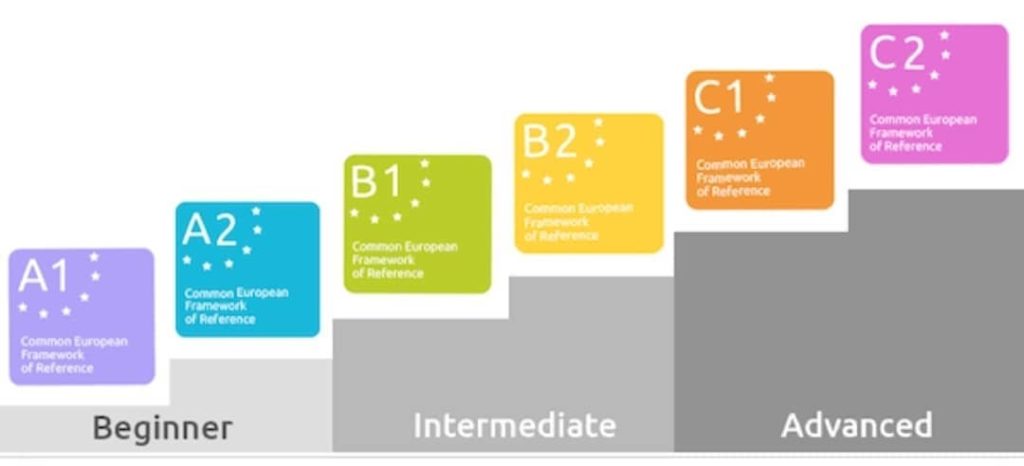
Here is how I personally list my language skills on my resume
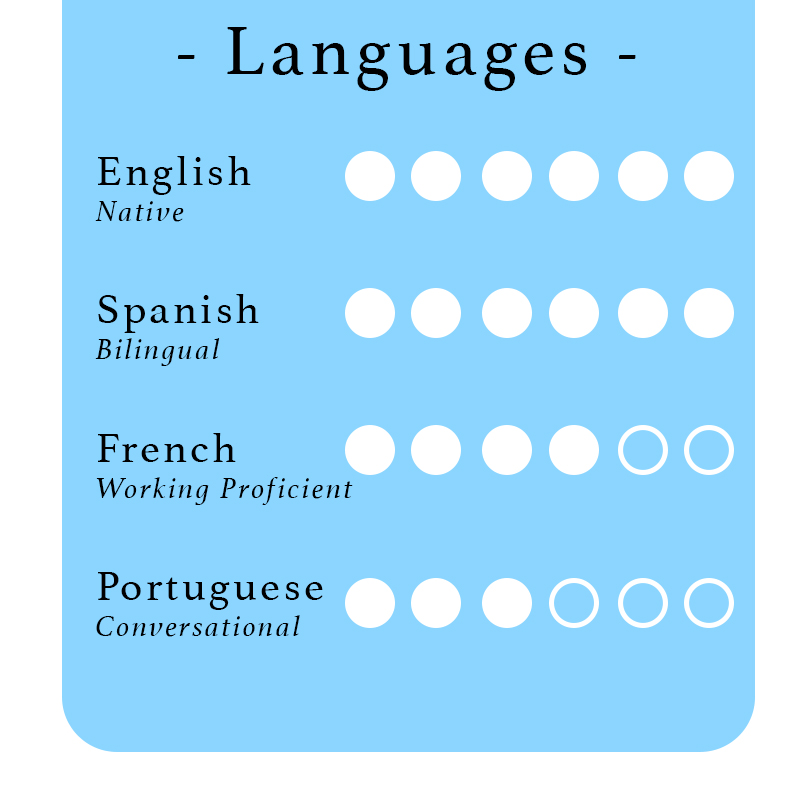
I live and work in the US, so how you choose to organize your resume might be a bit different.
Take a look at this snippet from my own resume, and let’s look at why I decided to organize it like that.
- The 6 circles align with the 6 main levels of the European system, but don’t assume that the reader is familiar with that system.
- I added English for comparison, which is functionally my “native language”.
- Each language additionally has a 1-2 word explanation that shows the employers what I can do in reality, not theory, with the language.
- I don’t list any languages which I could not use for work or which would not be useful. For my beginner A1 German, I don’t list it because there are neither German communities in my area nor is it good enough to work in. I don’t list my very good
- B2 Catalan, even though I can work in it. That’s because we have no Catalan community where I would be applying for work. However, I do list my Portuguese, even though working in it would be a challenge, because of how large the local community is.
How you can copy my multilingual resume snippet
Now I’m a designer so this was easy for me.
But if you don’t know how to make something this custom?
Here’s a quick tutorial on how you could make your own graphic using just Google Sheets or Microsoft Excel:
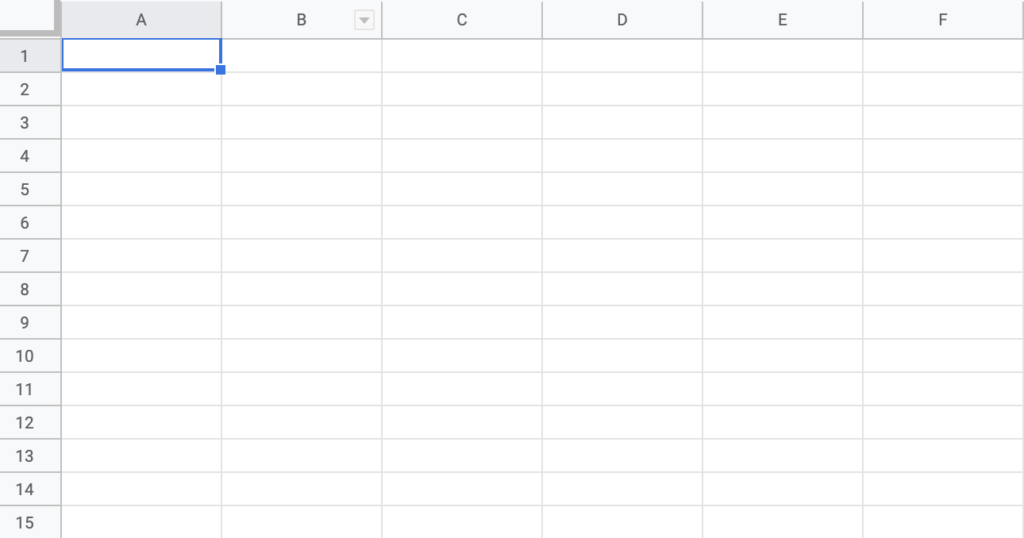
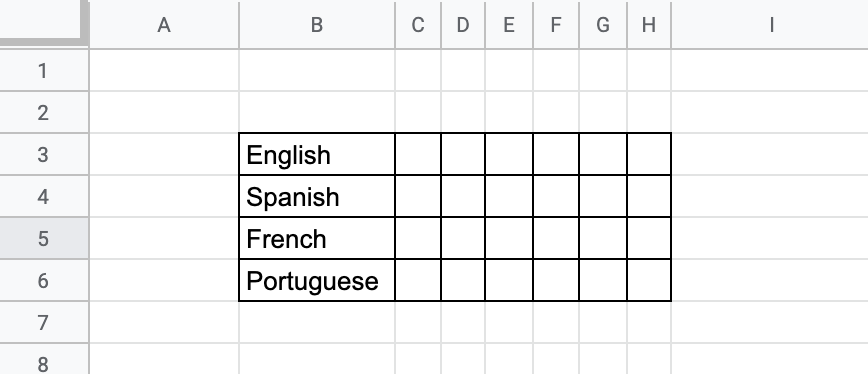
3. Outline the list of langue using the outline tool in your toolbar, and then additionally outline six cells to the right of each language.
4. Adjust the size of those columns so your languages read clearly but the other outlined cells are squares.
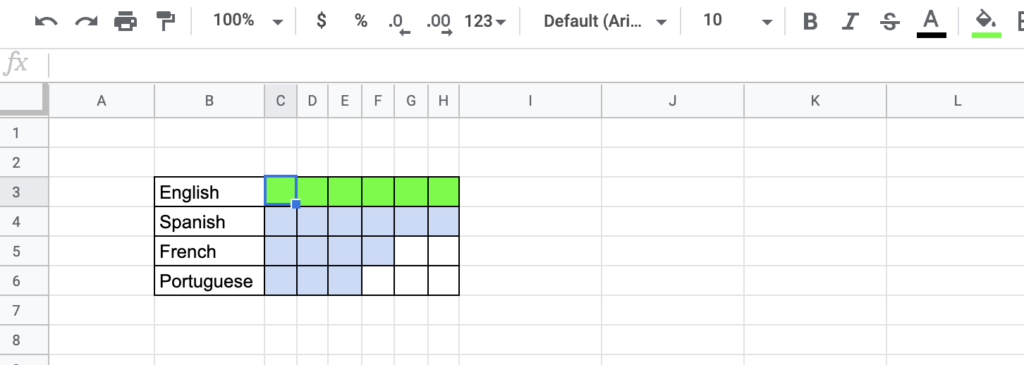
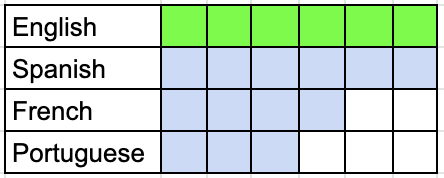
You can now place this graphic into any word processor or resume-making application!
I put mine in a side-bar of random skills, but you could place yours anywhere on your resume.
Free Bilingual Resume Templates
Here are 4 templates you can edit for bilingual resumes:
- 2 bilingual resumes written in both languages
- 2 bilingual resumes written in one language.
What you need to know about these templates:
- They are all editable in Google Drive. It’s free with any (free) Google account.
- Click on the resume you want to edit, copy all of the text, and paste it into a new doc
- That doc you can save and edit on Google Drive
- Just edit out everything you need to personalize, and you’re done!
If you need tech support, I also have a very quick tutorial at the bottom of these so you can use them yourself!
Click any template to open it on Google Drive
Tutorial for how to use the above resume templates
ANYTHING ELSE YOU WANT TO KNOW?
Questions about bilingual resumes, bilingual interviews, or anything else?
Let me know in the comments!
And if this article was helpful for you, please share it on social media!
I had a lot of fun making it and I think it’ll help a lot of people. So I’d love to see it shared widely.
